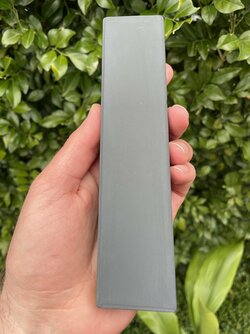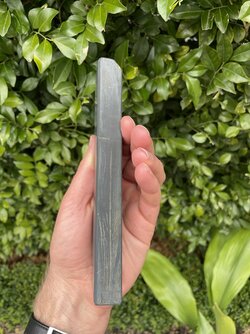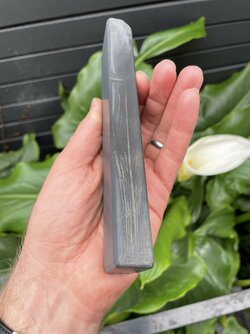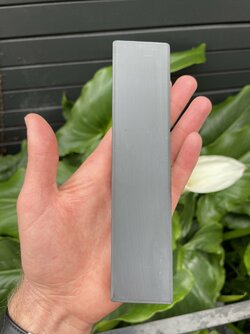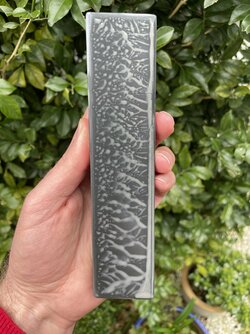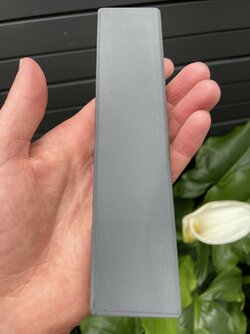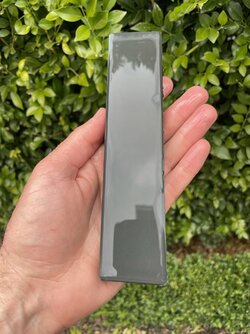Today I did the unthinkable. I used oil to hone on a Thuri. Everyone knows that you are not meant to do this. The old Escher labels even contain a warning specifically advising against it.
Apart from @Legion egging me on, I had a couple of reasons for doing this. Firstly, I prefer using oil. I get better finishes from oil with every other type of stone. The keenness of my Thuri edges has always been just short of where I like them. I had a spare rescue stone to test it on. The stone didn’t cost much and for all I know it has been used with oil in the past. I’ve also been playing around with Yellow Lakes recently. They seem to be a very similar material and I am getting fantastic results with oil.
I would not recommend trying this with a high value or mint condition stone. In fact I don’t recommend it at all. It’s breaking every rule there is about of honing with a Thuri. But I’m a bit of a rebel so I did it anyways.

Apart from @Legion egging me on, I had a couple of reasons for doing this. Firstly, I prefer using oil. I get better finishes from oil with every other type of stone. The keenness of my Thuri edges has always been just short of where I like them. I had a spare rescue stone to test it on. The stone didn’t cost much and for all I know it has been used with oil in the past. I’ve also been playing around with Yellow Lakes recently. They seem to be a very similar material and I am getting fantastic results with oil.
I would not recommend trying this with a high value or mint condition stone. In fact I don’t recommend it at all. It’s breaking every rule there is about of honing with a Thuri. But I’m a bit of a rebel so I did it anyways.
It worked great. Honing was smooth. The stone cleaned up easily with dish soap. The edge was like a Thuri edge just sharper. No big deal. 

